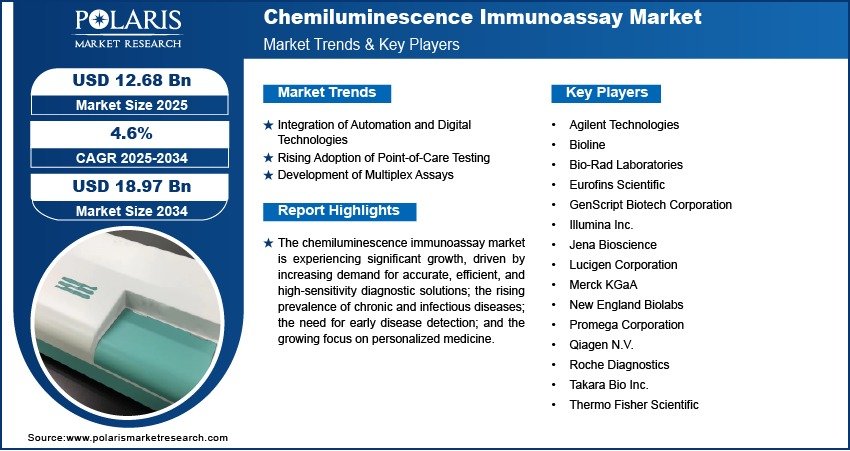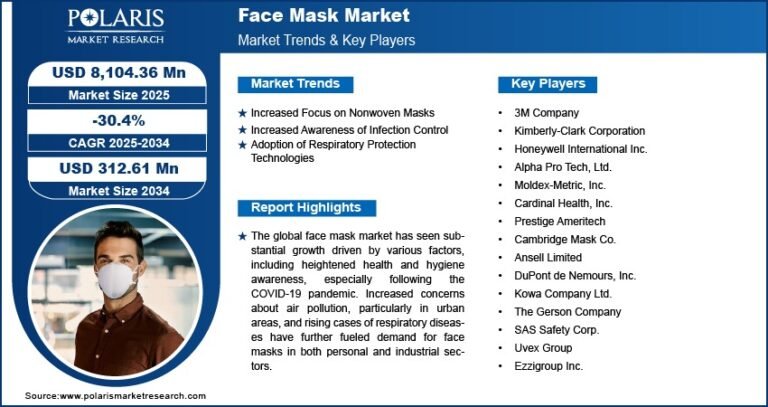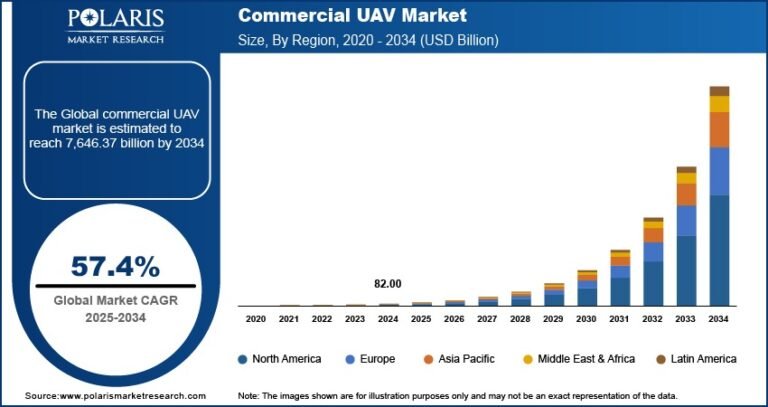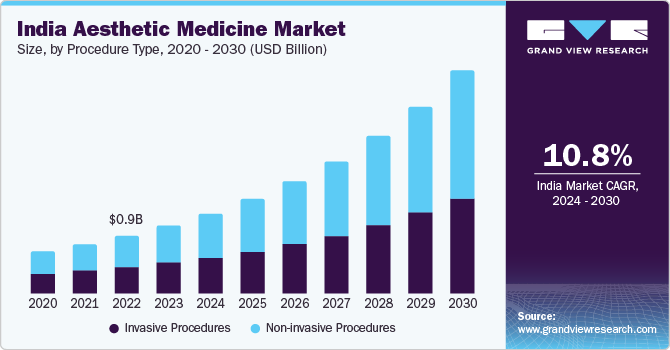Chemiluminescence Immunoassay Market Size Estimated at USD 18.97 Billion by 2034 | CAGR: 4.6%

Chemiluminescence Immunoassay Market Size and Forecast:
The chemiluminescence immunoassay market size was valued at USD 12.14 billion in 2024. The market is projected to grow from USD 12.68 billion in 2025 to USD 18.97 billion by 2034, exhibiting a CAGR of 4.6% during 2025–2034.
Key Market Drivers & Barriers:
One of the primary drivers of the chemiluminescence immunoassay (CLIA) market is the rising prevalence of chronic and infectious diseases, including cancer, cardiovascular disorders, and viral infections. This has increased demand for highly sensitive and specific diagnostic tools. Additionally, the growing adoption of automation and advanced clinical diagnostics across hospitals and laboratories is accelerating market growth.
Moreover, the demand for point-of-care testing and early disease detection techniques continues to surge, further contributing to the use of CLIA technologies. The shift towards personalized medicine and routine health check-ups is also expanding the adoption of these assays.
However, high equipment costs and stringent regulatory frameworks pose notable barriers. The complexity of the technology requires significant expertise and training, potentially limiting market growth in underdeveloped or resource-limited settings. Moreover, the presence of alternative diagnostic methods, such as ELISA and PCR, may hinder wider adoption in certain segments.
Latest Trends and Developments:
A key trend gaining momentum in the chemiluminescence immunoassay market is the integration of automation and digital health platforms. Laboratory automation and the use of AI-driven software for accurate and fast diagnostics are reshaping how CLIA systems are deployed in healthcare settings.
Another significant development is the miniaturization of instruments and the creation of compact, portable systems that can be used in decentralized settings. This supports the growing trend of home diagnostics and mobile health testing.
Additionally, manufacturers are increasingly focusing on developing multiplex assays that allow simultaneous detection of multiple analytes, thereby improving efficiency and reducing testing time. Collaborations between healthcare providers and diagnostic companies for R&D initiatives are also supporting innovation in assay design and throughput.
Market Size & Forecast:
|
Market Size Value in 2024 |
USD 12.14 billion |
|
Market Size Value in 2025 |
USD 12.68 billion |
|
Revenue Forecast by 2034 |
USD 18.97 billion |
|
CAGR |
4.6% from 2025 to 2034 |
Request for Free Sample:
Overview of Market Environment:
The global chemiluminescence immunoassay market is characterized by rapid technological innovation and a competitive landscape driven by major diagnostic companies. The market benefits from consistent healthcare investments, especially in developed regions such as North America and Europe, where demand for advanced diagnostic technologies is high.
Regulatory bodies in various regions are also working to streamline product approvals to ensure faster access to new technologies. The growing geriatric population and increasing burden of lifestyle-related illnesses worldwide are further strengthening the market’s growth trajectory.
Emerging economies in Asia-Pacific and Latin America are becoming attractive destinations for market expansion due to improved healthcare infrastructure, rising awareness, and government initiatives supporting diagnostics and preventive healthcare.
Growth Opportunities and Future Potential:
The future of the chemiluminescence immunoassay market looks promising, with several growth opportunities on the horizon. Technological advancements in assay design, such as the development of next-generation CLIA platforms with higher sensitivity and reduced turnaround times, are expected to drive adoption.
There is also a growing opportunity in personalized diagnostics and biomarker discovery, where CLIA plays a critical role in precision medicine. Furthermore, as infectious disease surveillance becomes a global priority, CLIA technologies are poised to see increased deployment in public health initiatives and research studies.
Overall, the market’s future potential is anchored in ongoing innovation, rising disease incidence, and the global push for accurate, efficient, and early diagnostics.






